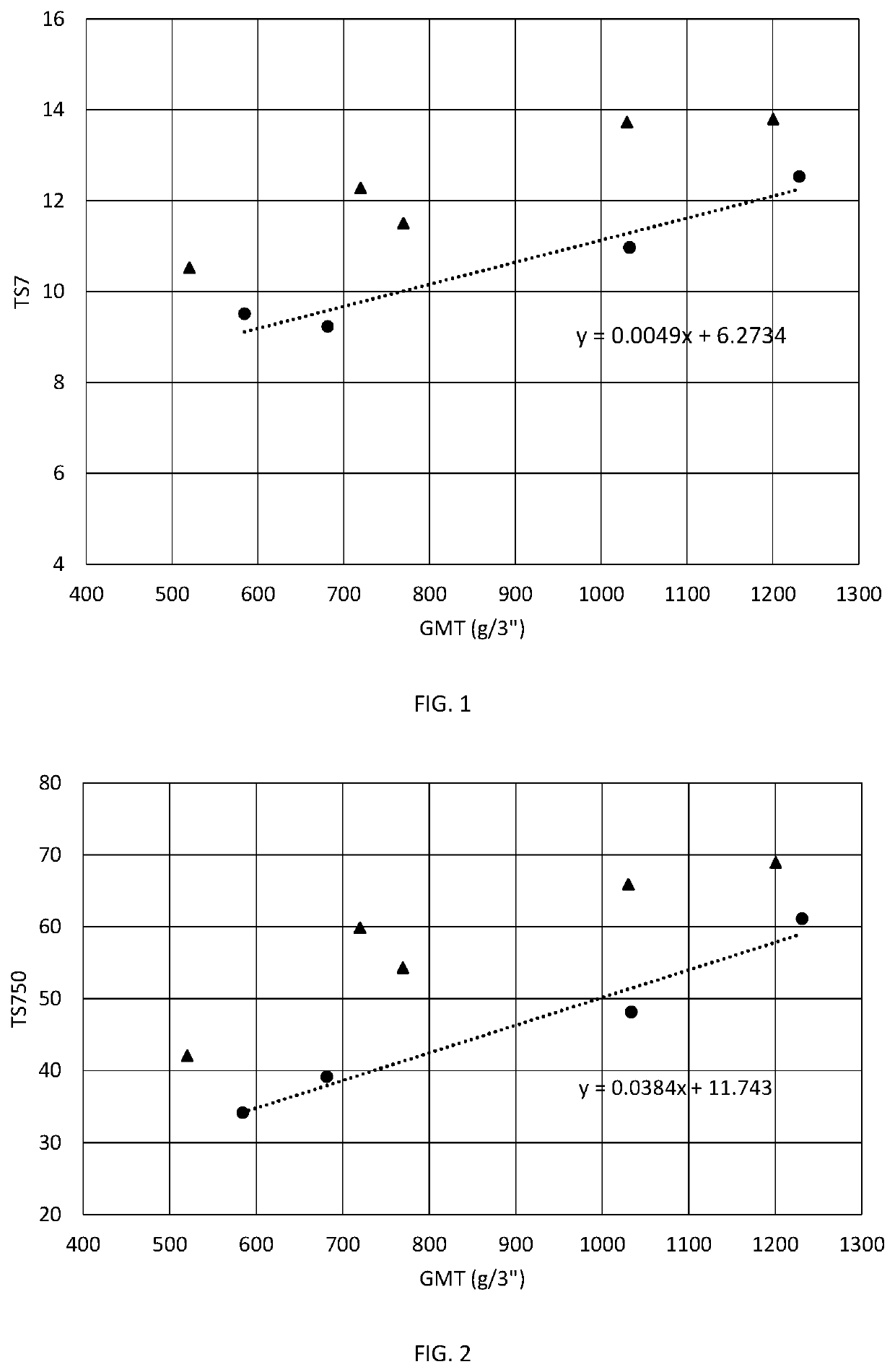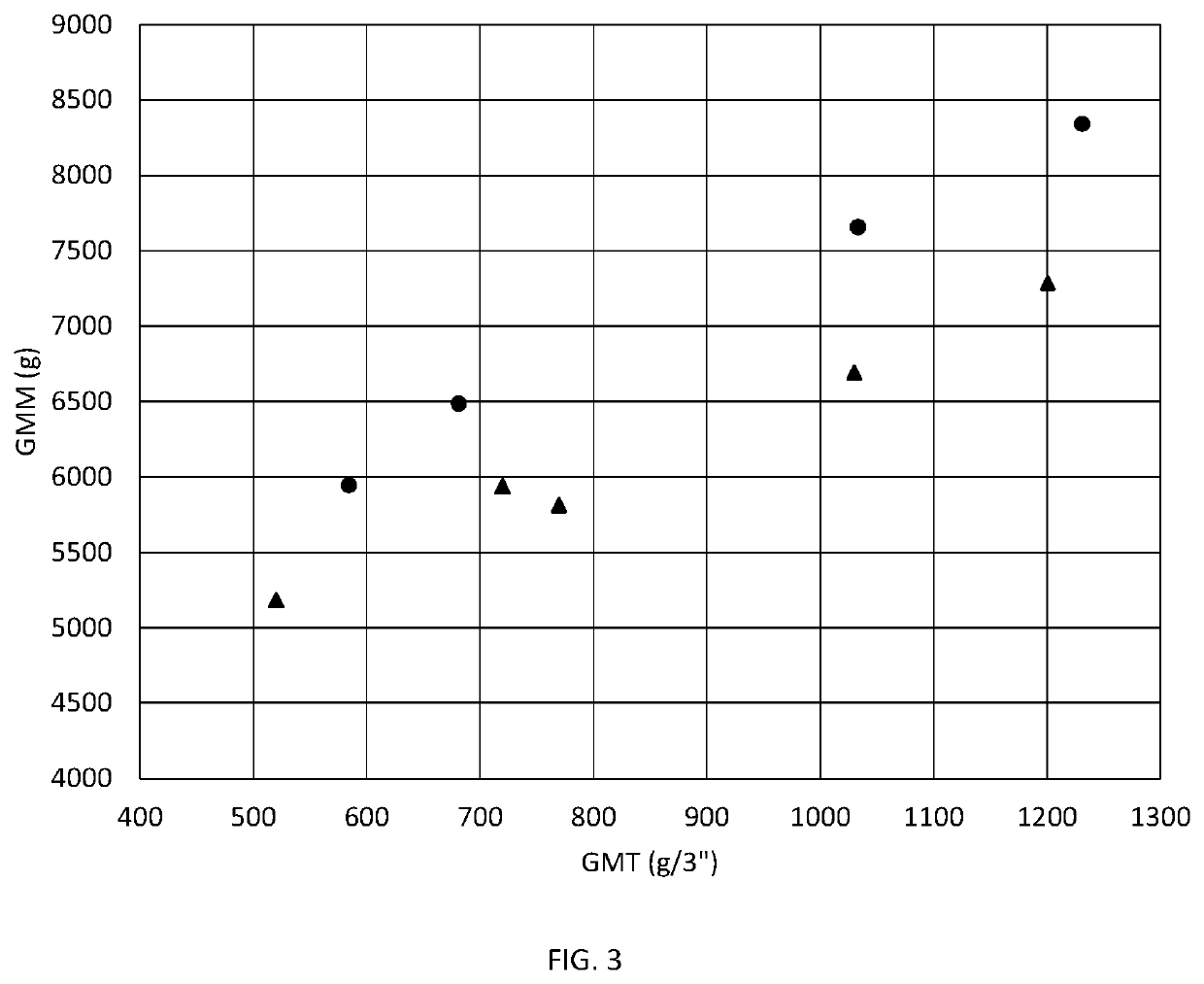Layered fibrous structures comprising cross-linked fibers
a technology of cross-linked fibers and fibrous structures, which is applied in the field of layered fibrous structures comprising cross-linked fibers, can solve the problems of affecting the tensile strength of sheets formed from cross-linked cellulosic fibers, reducing the tensile strength of sheets, and negating the bulk obtained by through-air drying, so as to improve the surface smoothness and softness of inventive fibrous structures, and improve the surface smoothness and softness. ,
- Summary
- Abstract
- Description
- Claims
- Application Information
AI Technical Summary
Benefits of technology
Problems solved by technology
Method used
Image
Examples
example
[0069]Single ply uncreped through-air dried (UCTAD) tissue webs were made generally in accordance with U.S. Pat. No. 5,607,551. The tissue webs and resulting tissue products were formed from various fiber furnishes including, eucalyptus hardwood kraft (EHWK), cross-linked EHWK (XL-EHWK) and Northern softwood kraft (NSWK).
[0070]Cross-linked fibers were prepared by first dispersing eucalyptus hardwood kraft (EHWK) in a pulper for approximately 30 minutes at a consistency of about 10 percent. The pulp was then pumped to a machine chest and diluted to a consistency of about 2 percent and then pumped to a headbox and further diluted to a consistency of about 1 percent. From the headbox, the fibers were deposited onto a felt using a Fourdrinier former. The fiber web was pressed and dried to form a fiber web having a consistency of about 90 percent and a bone dry basis weight from about 500 to 700 gsm. The fiber web was treated with a 25 percent solids solution of DMDHEU (commercially avai...
PUM
| Property | Measurement | Unit |
|---|---|---|
| weight | aaaaa | aaaaa |
| basis weight | aaaaa | aaaaa |
| basis weight | aaaaa | aaaaa |
Abstract
Description
Claims
Application Information
 Login to View More
Login to View More - R&D
- Intellectual Property
- Life Sciences
- Materials
- Tech Scout
- Unparalleled Data Quality
- Higher Quality Content
- 60% Fewer Hallucinations
Browse by: Latest US Patents, China's latest patents, Technical Efficacy Thesaurus, Application Domain, Technology Topic, Popular Technical Reports.
© 2025 PatSnap. All rights reserved.Legal|Privacy policy|Modern Slavery Act Transparency Statement|Sitemap|About US| Contact US: help@patsnap.com


